Author: abermeo
THE LARGEST CANADIAN AIRLINE HAS LAUNCHED NONSTOP SERVICE BETWEEN TORONTO AND QUITO
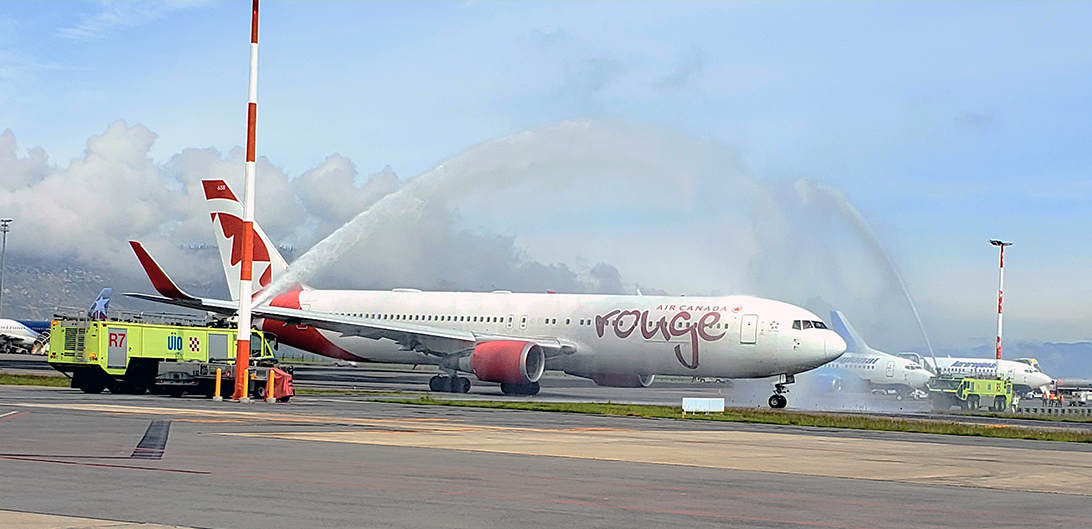
- This Monday, December 9, Air Canada Rouge commenced nonstop operations between Toronto and Quito with a Boeing 767-300 aircraft.
Departing from Quito International Airport, Air Canada Rouge launched three weekly nonstop flights with a Boeing 767-300 wide cabin aircraft from Toronto Pearson International Airport. The arrival of the Canadian airline is the result of joint efforts of Corporación Quiport, the Ecuadorian Government and the Municipality of Quito, which have committed themselves to increasing connectivity in the country.
The duration of the new nonstop flight is six hours and 35 minutes, directly connecting travelers from both countries; and throughout Air Canada’s international destinations from their Toronto based hub.
A strengthened relationship between Ecuador and Canada responds to the interest of Ecuadorians in Canada as a destination for tourism, education and business and will support the growing interest among Canadian tourists about Quito. It will also bring the Ecuadorian community residing in Canada closer to their home country.

“We are delighted with this new route that will connect another South American capital with our hub in Toronto. We have worked hard and are very proud to be the first Canadian airline to cover the Quito-Toronto route, thus bringing both countries closer together, strengthening trade and tourism, and increasing opportunities for hundreds of students,” said Alfredo Babún, Air Canada Regional Manager for Andean Countries.
Ecuadorian Tourism Minister, Rosi Prado de Holguín welcomed Air Canada Rouge, “which arrives in Ecuador to shorten the distance between these two countries and facilitate the arrival of Canadian tourists who are eager to enjoy the warmth and beauty of our ‘four worlds’.”
“Quito Airport is ready to welcome all Canadian and international tourists,” said Andrew O’Brian, President and Director General of Corporación Quiport, operator of the Quito International Airport, who also explained that Canada is not only a new destination, but also a new market with much potential. He also noted that Quito is a tourist destination with great potential for Canadian travelers who are eager to visit different places and see different customs. In this sense, Ecuador has much to offer in cultural and historical tourism, adventure and nature, besides its amazing beaches.
According to Sandro Ruiz, General Manager of Empresa Pública Metropolitana de Servicios Aeroportuarios (EPMSA), “this great step towards connectivity confirms that progress has been made in tourism in the country and the city as a result of joint hard work. And the Municipality of Quito is honored to welcome this airline as part of the city’s productive development process”.
Finally, Sylvie Bédard, Canadian Ambassador to Ecuador, said that “it was great to board the plane yesterday night in Toronto and arrive in Quito today in the early morning! This new route is, without a doubt, a milestone that will bring our countries and our people together in trade, tourism, education and investment. Air Canada Rouge has shortened the distance and is offering an excellent option for businesspeople, students, tourists and products to reach both countries. I wish to congratulate Air Canada, the Quito airport and Quiport, the Ministry of Transport and the Ministry of Tourism, and the Ecuadorian Embassy for the great joint efforts that have turned this project into a reality.”

QUITO AIRPORT IS THE FIRST IN ECUADOR TO BE CERTIFIED FOR ILS CATEGORY II OPERATIONS IN LOW VISIBILITY
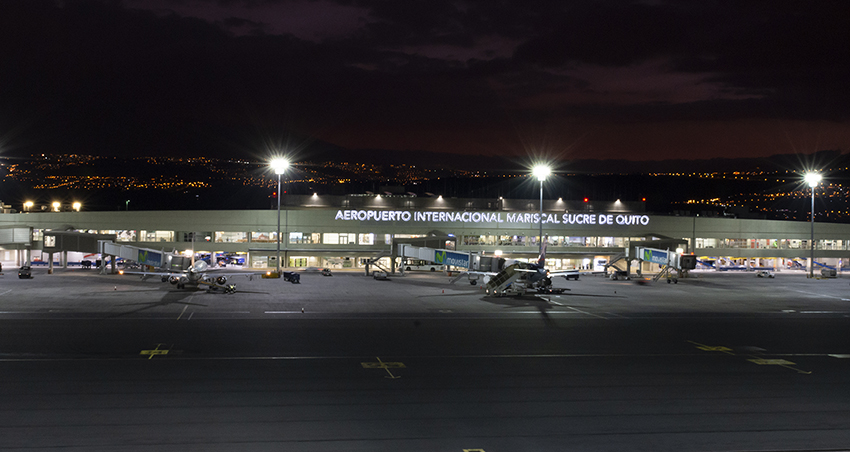
This system helps to reduce cancellations, delays or diversions due to fog, increasing capacity at the airport to high international safety standards.
Since 2013, the Civil Aviation Authority (DGAC) has worked with Corporación Quiport to implement air navigation aids. To this end, equipment and systems have been installed such as the ILS (Instrumental Landing System), RVR (Runway Visual Range) and runway centerline lighting, all to increase the operational availability of the capital’s airport in foggy or low visibility conditions. These measures have led to Quito Airport becoming the first in Ecuador to be certified in ILS Category II.
The ILS is an approach and landing aid, which is used globally to guide aircraft with precision during their approach to the runway and, in some cases, along it. This system has 3 categories of operation and is established by the International Civil Aviation Organization (ICAO).
At Quito Airport, runway 36 currently has Category II precision approach and runway 18 has Category I precision approach. Because of this, the Civil Aviation Authority has certified the approach procedures and the Quito International Airport Aerodrome Manual and has authorized operations in adverse weather conditions (severe fog).
The Civil Aviation Authority states that Category II approaches allow aircraft to land at a decision altitude of 100 feet (30.48 meters) and visibility of just 1,200 feet (350 meters). This benefits passengers and airlines by preventing delays, diversions or cancellations due to fog. “CAT II guarantees that Mariscal Sucre Airport has a first-rate infrastructure, placing it at the forefront of international airports” says Anyelo Acosta, Director General of Civil Aviation.
Andrew O´Brian, President and CEO of Corporación Quiport, indicates “to be pleased to have ILS CAT II at Mariscal Sucre Airport, the first airport in the country and one of the first in Latin America to achieve this. This means 99% effectiveness and a high level of safety at the airport, a goal we have had since 2013 ”. He adds that in order to comply with all the technical requirements of this certification, intense work has been carried out with the technicians of Quiport and DGAC; contributing to the development of air transport in Ecuador and making the airport a platform for quality at a national and international level.

Lastly, Pablo Galindo, Undersecretary of Air Transport at the Ministry of Transport and Public Works, says that the certification is a clear and strong signal that will attract other airlines to Ecuador. He emphasizes that the certification is the result of joint work by the private company and the public sector who have become strategic partners for tourism investment and connectivity in Ecuador.
QUIPORT BEGINS THE PASSENGER TERMINAL EXPANSION AT MARISCAL SUCRE AIRPORT
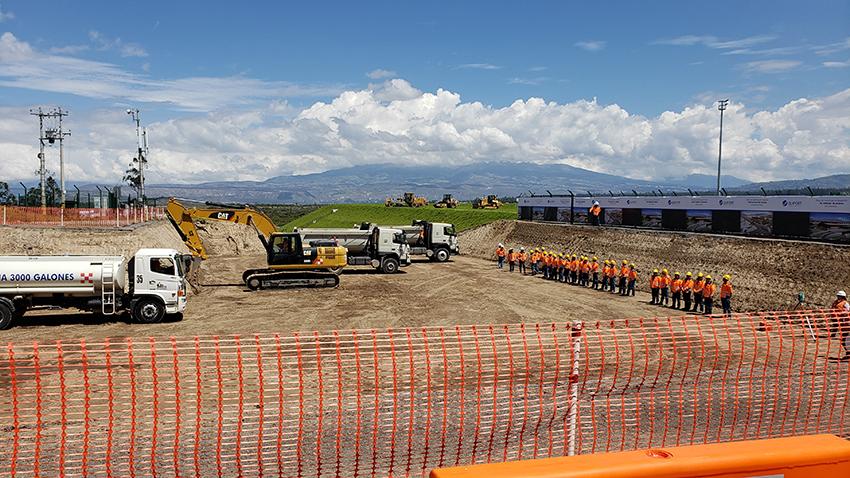
From 2019 to 2020, Corporación Quiport, concessionaire of the airport service, will execute the project to expand the passenger terminal and apron, with an investment of US$ 60 million.
In 2020 the terminal will increase by 35%, with an additional 6 self-service check-in kiosks and a 32% increase in the check-in area to improve the travel experience for passengers. The expansion of the boarding area will increase capacity by 19% in the boarding lounges, thanks to an additional 3,200 m2. The passenger apron will increase by 24,214 m2 with 2 extra parking positions for aircraft.
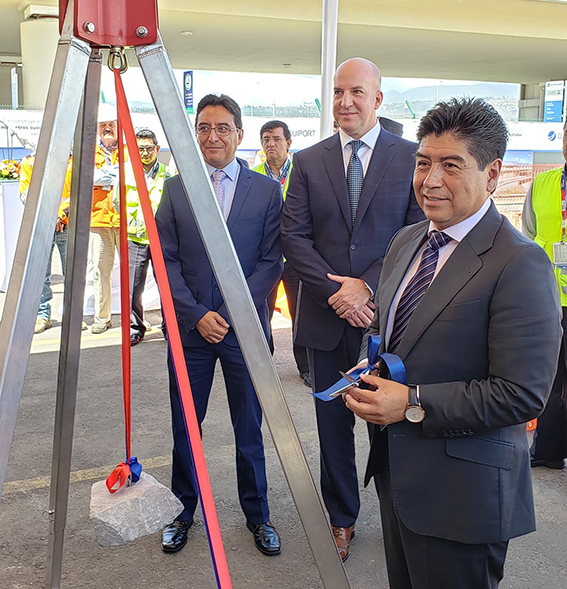
The work which began yesterday is part of the master plan for airport development approved by the Municipality of Quito, which counts on collaboration and joint work with the Civil Aviation Authority and the Ministry of Transport and Public Works.
For Andrew O’Brian, President and CEO of Corporación Quiport “all the actions carried out by the concessionaire are focused on the economic, social and tourism development of Quito and the country”. He adds that the 13-month construction process will create around 2,700 direct, indirect and induced jobs. He explains that Quiport aims to provide a unique experience to its passengers and a sense of belonging for Ecuadorians.
In the passenger area, the design, materials and colors aim to create a greater sense of belonging with the city. The areas for check-in, immigration and screening at departures and arrivals, baggage claim hall and customs will be expanded to offer greater comfort and efficiency.
The new space in the departures area will have services including free Wi-Fi, many power outlets, leading retail stores, restaurants with new national and international gastronomic options and a more practical play area for children.
“All of this will help to achieve the Wow! factor we want for our passengers and users”, says Andrew O’Brian.
Sandro Ruiz, General Manager of Empresa Pública Metropolitana de Servicios Aeroportuarios, congratulated the teamwork being performed for the benefit of Quito, its development and growth. “We are convinced that we must continue to focus on connectivity, tourism and productive development, and these types of projects and initiatives are key to delivering a legacy of quality for future generations”.
Jorge Yunda, Mayor of Quito, remarks on the positive influence that Mariscal Sucre Airport has had on various productive activities in the city, and he emphasizes the need to continue to focus combined efforts on connectivity and to support the actions of the airport. “This is why I am interested in supporting Quiport and encouraging our airport to keep growing and creating more services for the people”.
The works will involve prestigious local contractors such as Adriana Hoyos Design Studio, Tracto repuestos, Irigoyen, Ecuatest, Prestop, and international contractors including Stantec, Jetway and Smiths Detection.
The expansion project will be executed with the highest standards of service and quality, a reflection of the airport service which will continue to provide a unique experience to passengers. This way, Corporación Quiport reaffirms its commitment to offer infrastructure that will meet the country’s requirements for growth.
THE LOW-COST MEXICAN AIRLINE WILL OPERATE 7 WEEKLY FLIGHTS AND SHOWS THE GREAT POTENTIAL FOR GROWTH OF THIS ROUTE BETWEEN THE CAPITAL CITIES OF ECUADOR AND MEXICO.
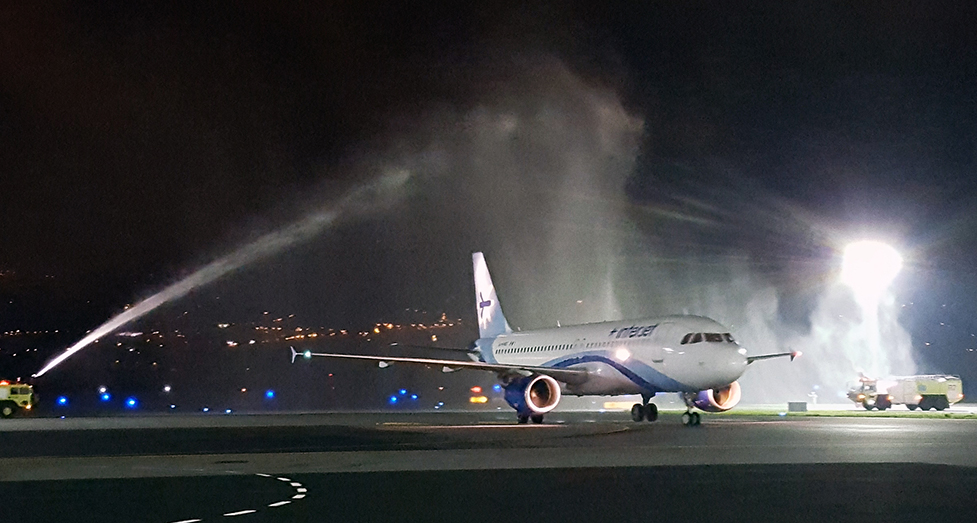
- The low-cost Mexican airline will operate 7 weekly flights and shows the great potential for growth of this route between the capital cities of Ecuador and Mexico.
Connectivity between Quito and Mexico City has significantly increased with the arrival of Interjet, the low-cost Mexican airline that began operations this Tuesday, October 29. Interjet offers seven direct weekly flights from Quito International Airport, served by an Airbus 320.
For Corporación Quiport, the concessionaire of the airport, the addition of Interjet is a very positive development for this route, as the new operator will invigorate the market and help regulate air ticket prices.
“There is no doubt that the Mexican government’s decision to eliminate the visa requirement for Ecuadorian citizens gave us a strong push to bring Interjet to Quito”, says Andrew O’Brian, President and CEO of Corporación Quiport. “The exchange of passengers between the two destinations is key to the route’s success, and the work to promote tourism that Ecuador can carry out in Mexico is very important” he adds.
For Julio Gamero, Executive Commercial Director of Interjet, “as we begin this new chapter, this direct route between Mexico City and Quito is a sign of the significant growth we are seeing in the region. Interjet brings an innovative price offering, while maintaining the service’s high standards of quality and safety. We are very pleased to have a partner like Quiport, who has supported us to make our arrival in Quito a reality”.
For Sandro Ruiz, General Manager of Empresa Pública Metropolitana de Servicios Aeroportuarios (EPMSA), “air connectivity continues to improve. With the addition of Interjet, Quiport continues to increase the number of airlines at Mariscal Sucre International Airport, a sign of confidence in the country which encourages tourism and business”.
EXPERIENCE THE INNOVATIVE DREAMLINER EFFECT FROM QUITO AIRPORT
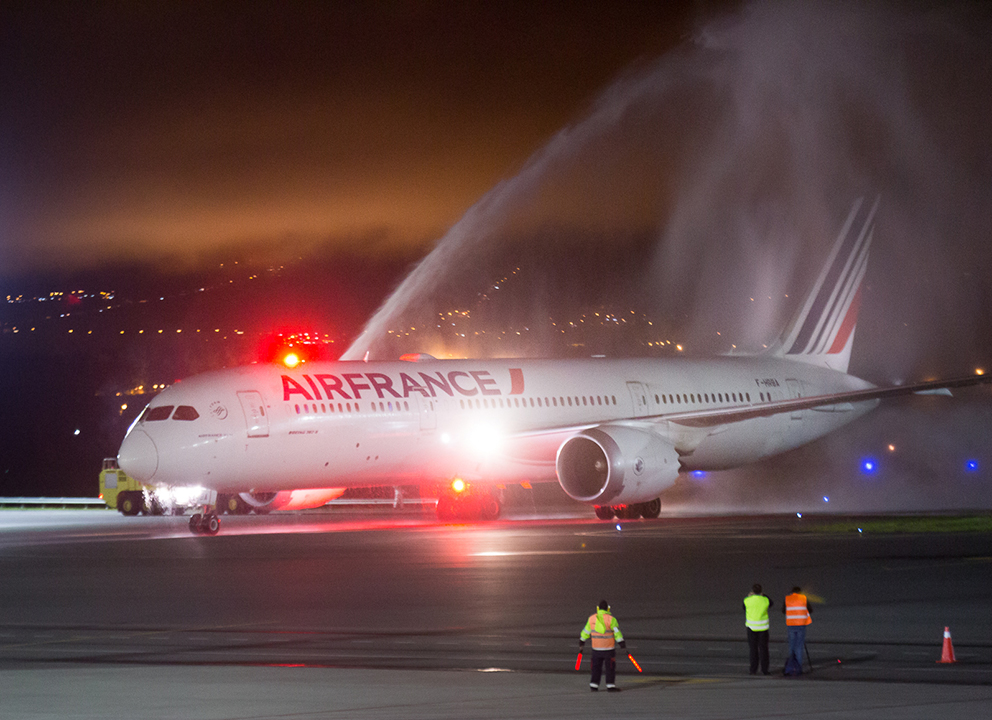
From October 27 at Quito Airport, passengers can enjoy an innovative experience onboard the Dreamliner 787-900, operated by Air France. The modern aircraft arrived in Quito for the first time yesterday from Paris Charles de Gaulle Airport.
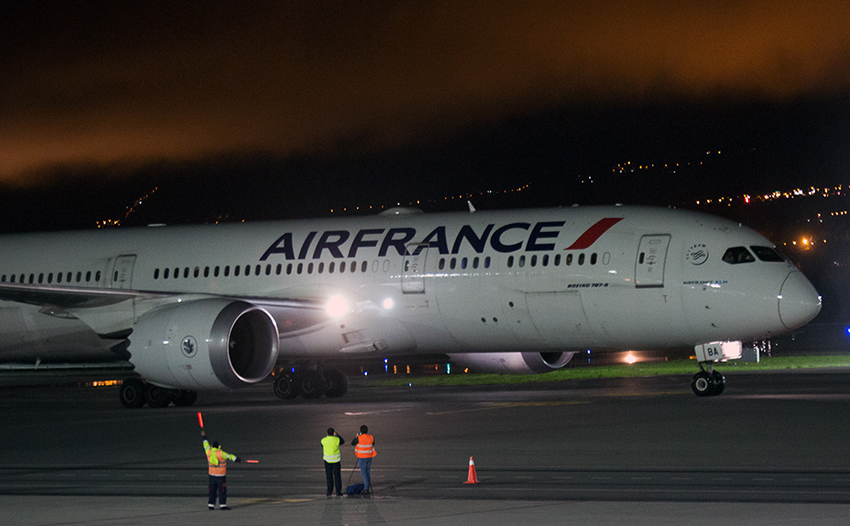
This new service with the Boeing 787-900 is very important for Corporación Quiport. It is a new generation aircraft that provides more comfort and is very efficient, offering Ecuadorian passengers a new flying experience. Air France’s decision shows the importance it places on developing its market in Ecuador, says Andrew O´Brian, CEO of Quiport.
The Boeing 787, with capacity for 276 passengers, is the most modern aircraft in Air France’s fleet, offering multiple benefits to its passengers to make long journeys more enjoyable. It is equipped with three cabin classes: business with 30 seats; premium economy with 21 seats, and economy with 225 seats.
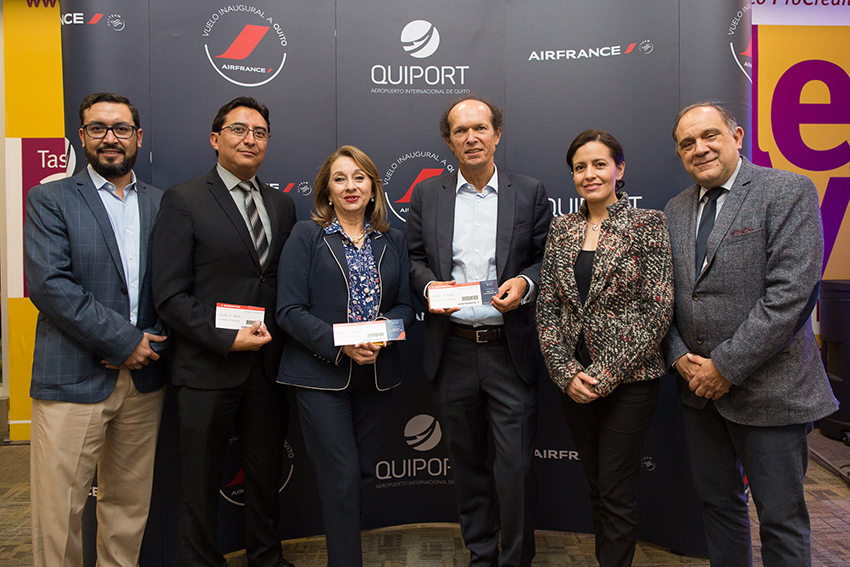
Air France operates three direct flights between Quito and Paris Charles de Gaulle Airport on Tuesdays, Fridays and Sundays.
Elisa Dhuvettere, Regional Commercial Director of Air France, emphasizes that the airline has full faith in the tourism potential of Ecuador, which is why the airline has decided to bring in the new generation aircraft to serve the country.
From Quito Airport, passengers will have a more comfortable experience with enhanced seats and 30% larger windows compared to other similar aircraft. The Dreamliner also offers a lower cabin altitude and better humidity, ensuring a more comfortable and pleasant journey.
Sandro Ruiz, General Manager of Empresa Pública Metropolitana de Servicios Aeroportuarios, says “we are very pleased with Quiport’s work to increase connectivity, as shown by Air France’s decision to send one of the most modern aircraft to serve our skies”.
The evening reception to welcome the Dreamliner ended with words from Rosi Prado de Holguín, Minister of Tourism, who stated the importance of emphasizing that Ecuador is a peaceful country, and the arrival of the Dreamliner is a show of trust and reflects the potential for tourism we have and need.

AIRPORTS COUNCIL INTERNATIONAL LATIN AMERICA – CARIBBEAN MEETS IN BOGOTÁ
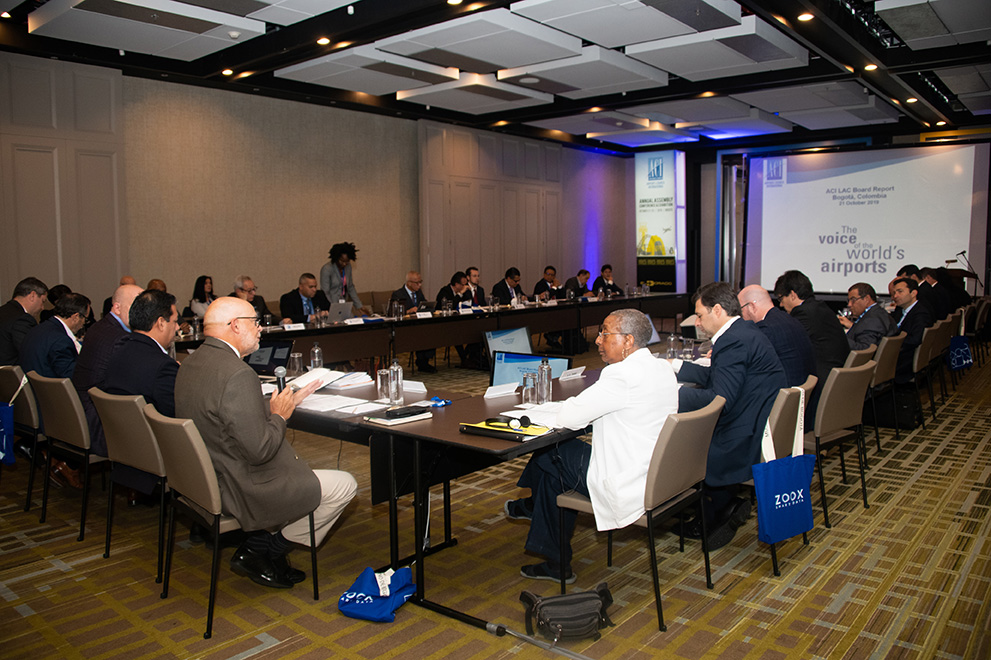
The average growth rate in passenger traffic in Latin America between January and June 2019 is 5.6% per annum. This was announced by the Airports Council International Latin America – Caribbean (ACI-LAC) during today’s Board meeting in Bogotá.
Andrew O’Brian, President of ACI-LAC, explained that this growth is greater than the global average of 3.6% per annum. “The region is registering higher growth rates than other areas of the world. This is because in Latin America and the Caribbean the air transport sector still has much room to develop. The large distances that must be covered, together with the lack of other efficient means of transport, creates a scenario in which aviation will contribute significantly to linking cities and countries”, he said.
The meeting discussed other important topics for the development of the industry in the region, such as the Airport Excellence Program in Airport Security, and the Program for Improving the Passenger Experience in Airports. Corporación Quiport has been a pioneer in these programs on a regional level and the experience in Quito airport has served as a model to replicate in other airports.
ACI World and ACI-LAC hold high level events
Airports Council International at global level (ACI-World) and its regional chapter in Latin America and the Caribbean (ACI-LAC) are meeting at several events from yesterday until October 23 in the Colombian capital for discussions on the future of the airport industry.
Yesterday the ACI World CEO Forum took place, when the top representatives of more than 40 global airports debated topics of great interest for the industry. Mr. Andrew O’Brian, President and CEO of Quiport, represented the Latin America and Caribbean region as President of ACI-LAC within this group of leading global airports. The objective was to highlight the vision and the proposals developed in Latin America and the Caribbean.
The meeting discussed highly topical subjects such as defining the position of airports towards climate change and developing a joint strategy which leads the airports to a carbon neutral footprint by 2050.
The meeting also discussed the need to increase air space capacity by optimizing the current capacity, and by new procedures. This is one of the issues that could limit the growth of airports.
The event continues tomorrow with the start of the ACI-LAC General Assembly attended by 350 representatives from the region’s airports.
CARGO OPERATIONS AT THE AIRPORT CONTINUED DURING THE PROTESTS
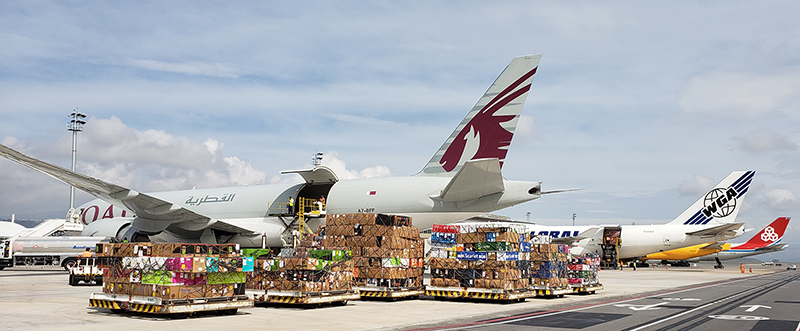
Cargo exports continued from Mariscal Sucre Airport despite the difficult situation faced in the country, and particularly the flower industry, during the protests and indigenous mobilization which ended recently. The cargo agencies at Tabacarcen and the palletizers at the airport’s export terminal continued to operate and flights which landed at the airport were dispatched.
In total, 23 cargo flights were affected from October 7 – 13, out of a total of 60 flights that were scheduled during this period. Fifteen flights were cancelled, three were rescheduled for a later date and five were delayed.
There was a 40% drop in the volume of flowers processed for export during the protests. Shipments of flowers were transported to the cargo agencies and the cargo terminal in convoys, avoiding road closures.
The four palletizer companies (Pertraly, Servipalet, Novacargo and Aronem) continued to operate by making changes to work shifts wherever possible and supporting their staff when it was necessary to extend shifts to guarantee the continuity of flower exports.
Eduardo Emanuele, General Manager of Pertraly, explains “we received cargo with a certain irregularity and processed and shipped it using the aircraft that were operating during this time. Given the delicate situation, we had to intensify security and controls for the cargo”.
“Stopping operations was never an option and we continue to work to the highest standards of quality and safety, as expected. We were always prepared to handle the cargo which continued to arrive from the flower sector to the cargo agencies and on to our facilities. From this perspective, cargo operations at Quito Airport were not interrupted” he concludes.
Santiago Gómez de la Torre, General Manager of Tabacarcen where 70% of the cargo agencies that handle flowers operate, confirms that “during the strike that lasted from October 9 – 13, Tabacarcen operated 24 hours a day. Regarding operations, we have a contingency plan in place, so we never have to stop offering our services to the clients and users in Quito and the province, particularly importers, flower growers and cargo agencies.
He continues, “we are pleased to have been able to persevere in a time of crisis and this is all thanks to our ongoing training and commitment in these matters. We constantly communicated and coordinated with security and law enforcement agencies, who supported and protected us, to provide reassurance to the community despite the circumstances in the country. Although this was a difficult time for the whole country, cargo continued to arrive, and we never stopped receiving it with our and our clients’ operations. Our employees showed great commitment to the country and, together with well-provisioned emergency logistics including beds, food and games as a distraction, we were able to offer an unrestricted service”.
REPORT ON THE STATUS OF OPERATIONS AT THE QUITO INTERNATIONAL AIRPORT
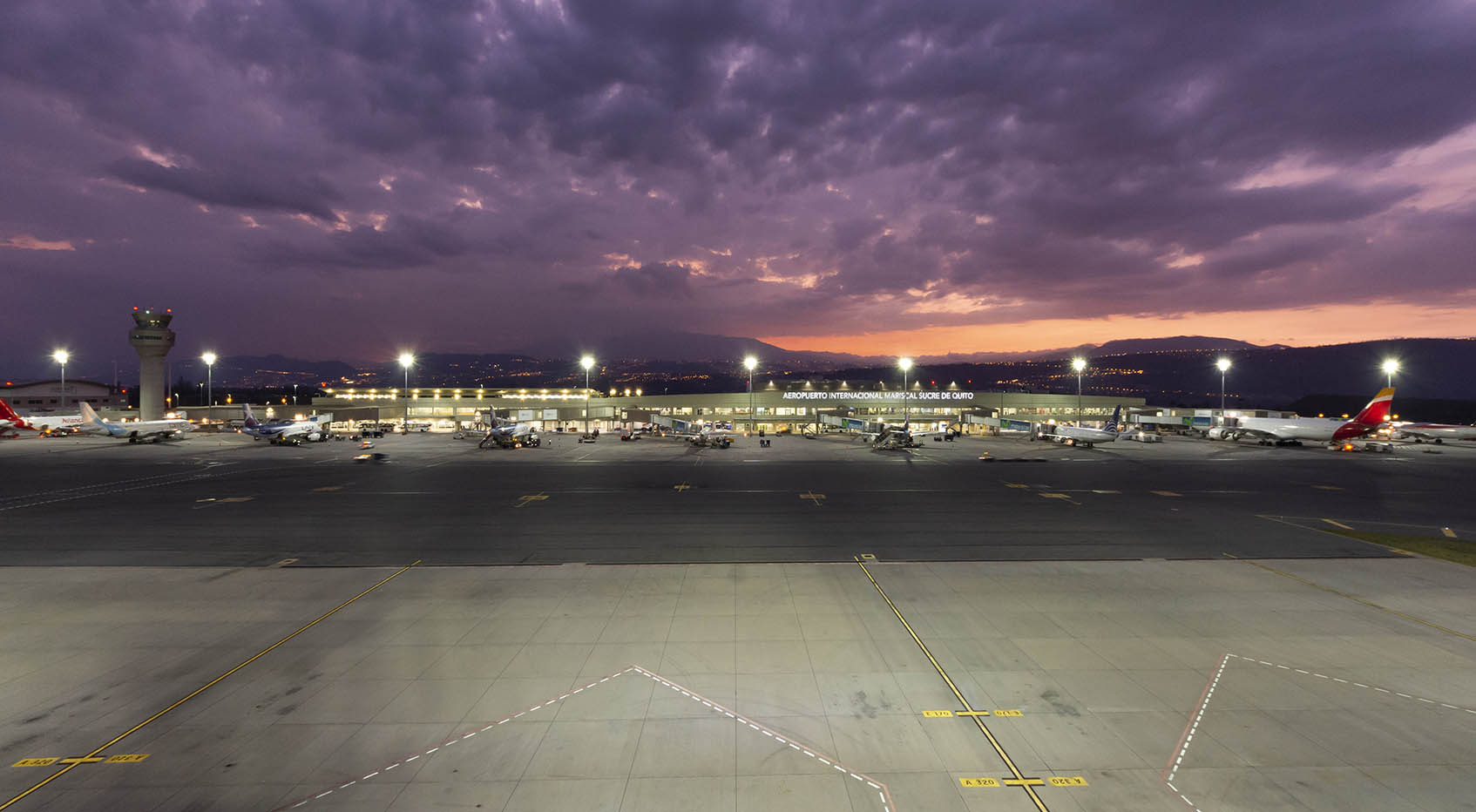
Corporación Quiport informs that the operations of the Quito International Airport have remained open during the previous days of strike and there have been no cancellations or deviations of flights as of Saturday, October 5 as a result of the protests underway in the city and country.
Corporación Quiport keeps a constant coordination with the Municipality of Quito, the National Government, the Metropolitan Public Company of Airport Services and the General Directorate of Civil Aviation, as well as with all public and private entities that provide service and operate at the airport, in order to define the most appropriate actions to guarantee the continuity of all services at the Quito airport and protect the safety of passengers, users and employees, as well as airport facilities.
Many passengers are arriving at the airport up to 24 hours in advance of their flights in fear of the possibility of a new street closure. Corporación Quiport is serving them with snacks and hot and cold beverages and offers sleeping bags to those passengers who have decided to spend the night in the terminal so that their stay is more bearable.
Andrew O’Brian, President and CEO of Corporación Quiport, said that “in these difficult times that Quito and Ecuador are going through, Quiport and all the airport operators working tirelessly to ensure that the aerial gateway to the city remains open and fully operational, fulfilling the commitment assumed with the city and the country”.
We ask the citizens to inform themselves through the official channels about the state of the access roads to the airport, as well as with their airlines to know more details about the status of the flights. We request passengers on canceled flights not to commute to Quito airport and to communicate directly with their airline.
QUITO AIRPORT ACHIEVES CARBON NEUTRALITY
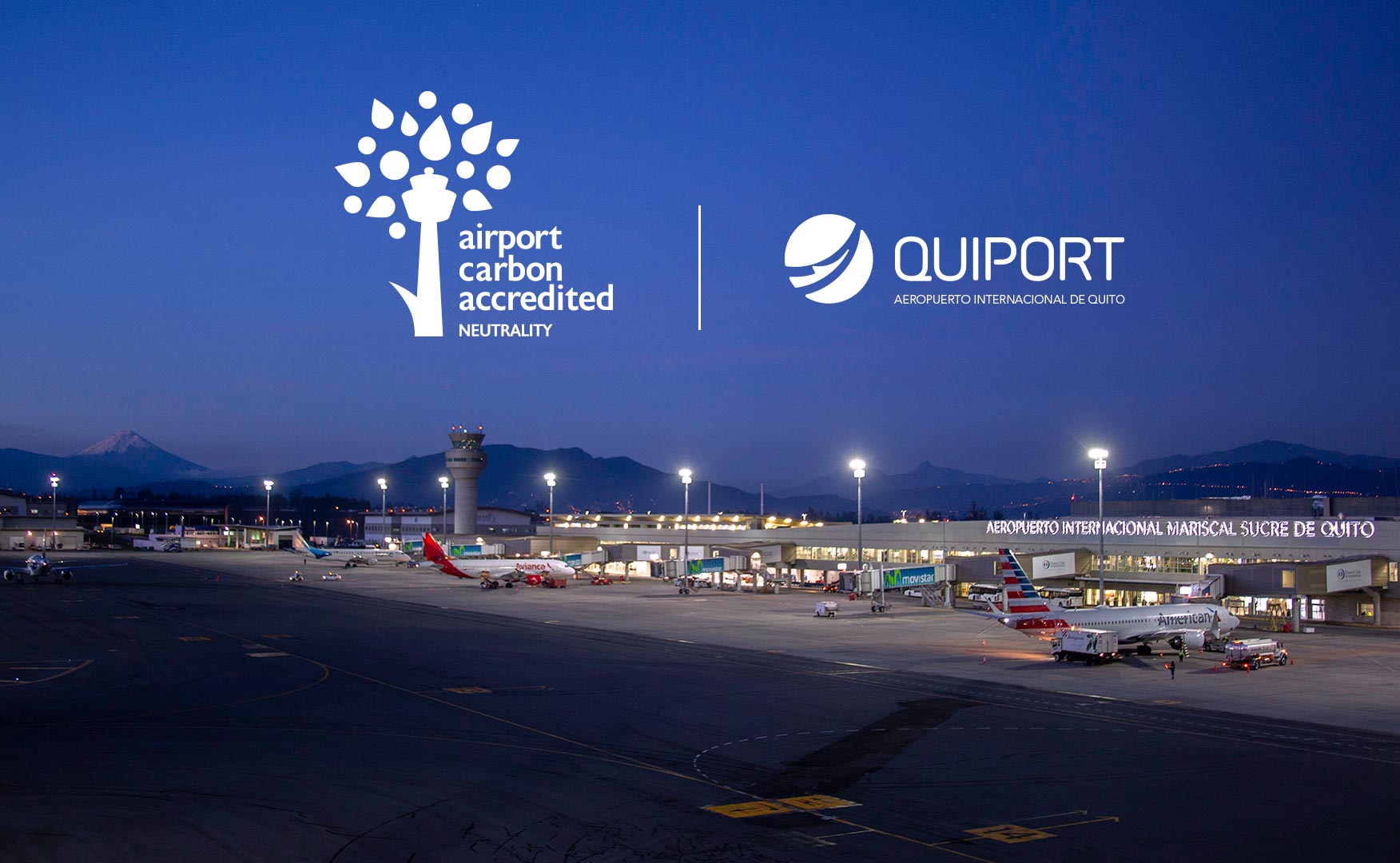
- Corporación Quiport joined the Airport Carbon Accreditation program in 2015, and now Mariscal Sucre Airport is the first international airport in Latin America and the Caribbean to reach carbon neutral status.
Thanks to Corporación Quiport’s initiative and management, Quito International Airport has reached carbon neutrality in the Airport Carbon Accreditation (ACA) program which was created by Airports Council International (ACI World) and is technically endorsed by the United Nations International Civil Aviation Organization, the World Bank and the U.S. Federal Aviation Administration.
Our city’s airport has become the first international airport in the entire Latin American and Caribbean region to achieve carbon neutrality.
Regional Pioneers
“Corporación Quiport is one of the pioneers of this program. We joined ACA in 2015 and today we have completed the four levels of the program. Corporación Quiport’s initiatives to achieve this important accomplishment have included concrete actions to reduce greenhouse gas emissions, reduce fuel consumption, increase energy efficiency, improve water management, maintain conservation areas for flora and fauna and more”, says Andrew O’Brian, President and CEO of Quiport.
In July 2019, emissions for 2018 were measured and Quito Airport’s carbon footprint was calculated at 3,273 tons of CO2emissions, a 41% reduction compared to 2014 as the base year (5,534 tons of CO2).
Maintaining Neutrality
It is important to note that once carbon neutrality has been achieved, a plan must be set in place to reduce greenhouse gas (GHG) emissions in order to stay at this level of the ACA program. Each year, we will recalculate the carbon footprint and maintain or reduce the levels of emissions to avoid increasing the carbon footprint, as well as offset emissions for another year.
“We continue to work so that our efforts go beyond Quiport’s operations; to date we have amplified our impact by getting 26 companies at the airport, from airlines to commercial operators, to start their own initiatives to reduce their carbon footprints”, says Mr. O’Brian.
Sandro Ruiz, General Manager of Empresa Pública Metropolitana de Servicios Aeroportuarios y Gestión de Zonas Francas y Regímenes Especiales (EPMSA) – the municipal entity in charge of overseeing the airport concession – comments, “as the representative of the Municipality of Quito at the airport, EPMSA congratulates it on becoming the first international airport in Latin America to achieve carbon neutrality. This would not have been possible without the great dedication and efforts of Corporación Quiport, which has allowed a balanced ecosystem to be maintained at the Airport”.
Offsetting Emissions
Quiport offsets its direct emissions by buying certified carbon credits in sustainable projects. We have chosen the MANOA REDD+ Project which works to preserve 74,000 hectares of forest in Rondônia State, Brazil, which faces threats to its biodiversity from deforestation and illegal logging.
The certificate will be officially awarded at the ACI-LAC Annual Assembly this October in Bogotá.
MARISCAL SUCRE INTERNATIONAL AIRPORT WILL BE THE NEW PLATFORM FOR TRAINING COMMERCIAL PILOTS IN ECUADOR
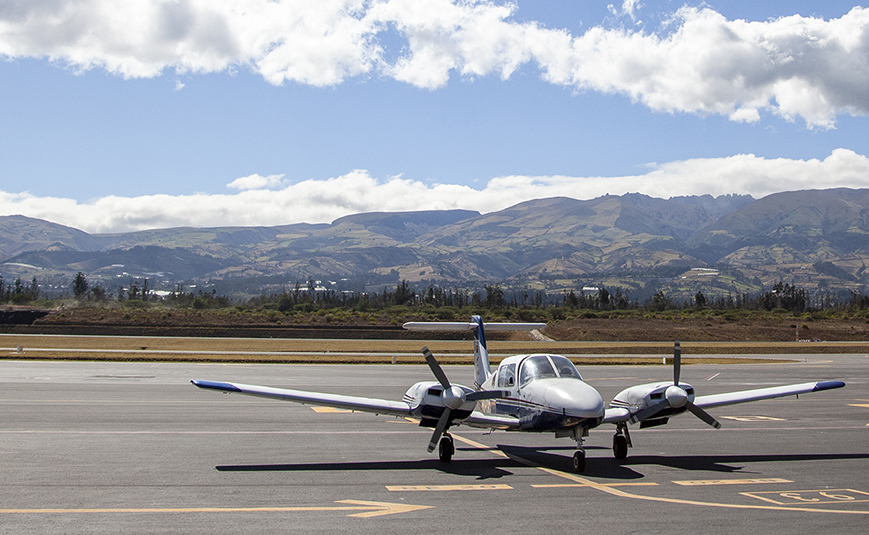
- Quito International Airport is at the heart of the country’s aviation activity, thanks to the quality of its cargo and passenger operations and now as a professional training center.
- A key aim of the training school is to provide quality training based on the highest standards of the aviation authority.
With the aim to foster innovative teaching methods and train professional pilots, the ESAV Aviation School opened a new base of operations at the general aviation terminal of Mariscal Sucre International Airport in Quito. Corporación Quiport, the concessionaire in charge of managing and operating the airport, provides all the administrative and logistical facilities for the school’s operation.
Operations will be managed according to the availability of the students at the fully equipped facilities of Ecuacentair, which oversees the airport’s private aviation terminal. The aircraft which will be used in training are a CESSNA 172Q, registration no. HC-BMJ and a PA44-180T, registration no. HC-CRG. There is also a flight simulator certified by the Civil Aviation Authority of Ecuador.
For Quiport, it is a privilege to provide suitable infrastructure for aviation students so that they can prepare to take on the demands of the domestic aviation market, as a result of the standards reached in the air transport industry.
Andrew O’Brian, President and CEO of Corporación Quiport, explains that “our work approach aims to develop diverse activities related directly or indirectly to the air transport sector. It is important that at our facilities we incorporate the greatest number of links in the aviation industry value chain, which is why we have embraced ESAV’s operation with high expectations.”
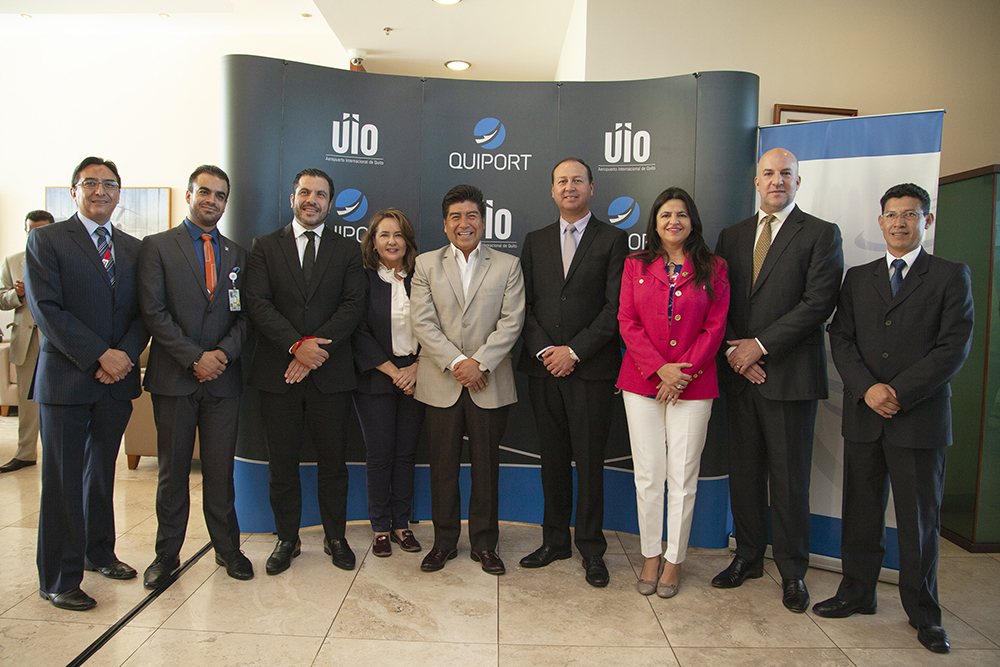
The Municipality of Quito, through Empresa Pública Metropolitana de Servicios Aeroportuarios, arranged and assisted the process to open the ESAV Aviation School’s new operation in order to expand horizons in aviation education so that future generations can access excellent training.
Captain Gabriel Guapaz Bone, Operations Manager, emphasizes that “at ESAV Aviation School we train pilots; a pilot is an artist who is passionate about flight. Our mission as a training center is to train aviation professionals, and we are inspired by seeing our students’ dreams come to fruition”.
The ESAV Aviation School is a company dedicated to training pilots which was founded in 2009, and it is certified by the aviation authority. It creates training programs to produce competent, efficient pilots with the highest standards of quality.
